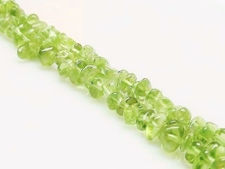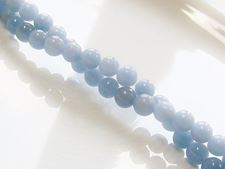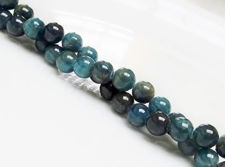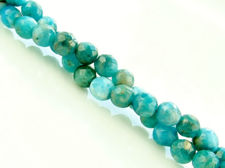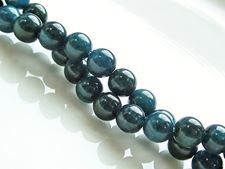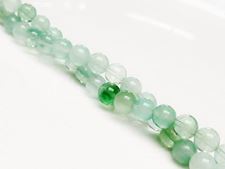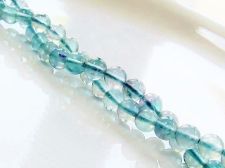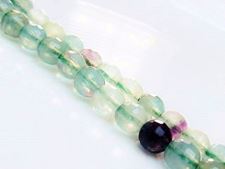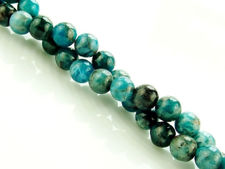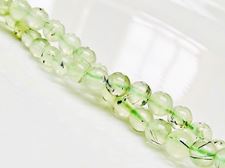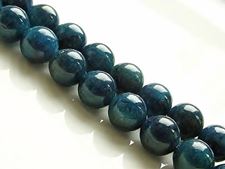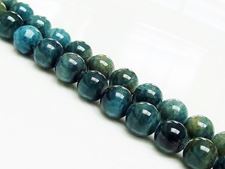- Shop per Size
- Shop per Shape
Apatite, Angelite, Fluorite, Peridot and Prehnite Beads
Apatite ... or the mineral that speaks to the bones. Apatite is a group of calcium phosphate minerals subdivided in three series, depending its components. One of them and in a modified form, namely hydroxyapatite, makes up to 70 % of the weight of human bones. Most of the gemstones though are fluorapatite, which has the particularity to define the hardness 5 on the Mohs' scale.
Shimmering blue apatite, also known as cat's eye apatite, is quite unusual in jewelry application. Apatite is considered a stone of motivation that helps to focus as well with problem solving and as with public speaking.
Delicate light grey-blue Anhydrite or Angelite is a dehydrated translucent form of gypsum and forms in hot underground parts of the salt basins in western Peru.
Colorful Fluorite is a natural solid form of calcium fluoride and defines value 4 on the scale of Mohs' hardness. Its colors flow and shift, but have often a blue to purple fuorescence due to mineral impurities. The mineral exists in all the colors of the rainbow and has consequently been dubbed "the most colorful mineral in the world".
From translucent to semi-transparent ... with a vitreous to pearly luster ... prehnite silicate exists in green, yellow, blue and grey-white colours. It seems to be the first mineral that received its name after a human being, in this case after the governor of the Cape of Good Hope, the Dutch Lieutenant-Colonel Hendrik Van Prehn (1733-1785). The green version is linked to the heart chakra.
Olivine, another green silicate, gives us the olive-green gemstone called Chrysolite or Peridot.
3x8 mm, chips, gemstone beads, center-drilled, peridot, natural, B-grade, one strand
6x6 mm, round, gemstone beads, angelite, light blue, natural
6x6 mm, round, gemstone beads, apatite, green-blue, natural, A-grade
6x6 mm, round, gemstone beads, blue apatite, natural, faceted
6x6 mm, round, gemstone beads, deep green-blue apatite, natural
6x6 mm, round, gemstone beads, fluorite, green, natural
6x6 mm, round, gemstone beads, fluorite, green, natural, A-grade
6x6 mm, round, gemstone beads, fluorite, rainbow, natural, faceted
6x6 mm, round, gemstone beads, light green-blue apatite, natural
6x6 mm, round, gemstone beads, prehnite, light pear green, natural
8x8 mm, round, gemstone beads, apatite, deep green-blue, natural
8x8 mm, round, gemstone beads, apatite, green-blue, natural, A-grade
- 1
- 2




